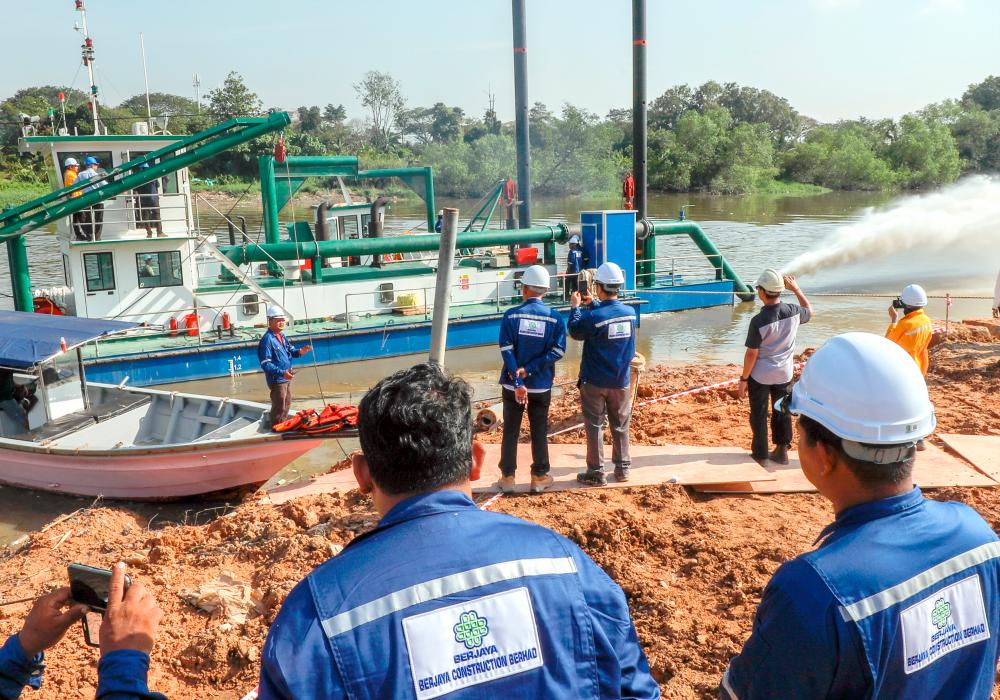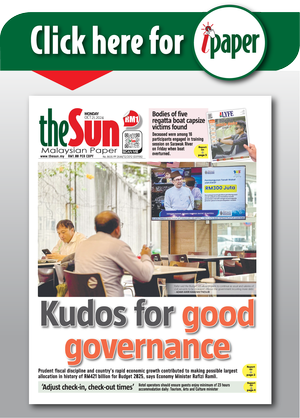SHAH ALAM: Efforts to deepen and widen the Klang River as part of a long-term flood mitigation strategy for the Klang Valley is on track, said Selangor executive councillor for Infrastructure and Agriculture Izham Hashim.
He was speaking during a presentation on the Klang River Rehabilitation Project, an initiative carried out by special purpose vehicle Landasan Lumayan Berjaya Sdn Bhd, which was formed through a joint-venture between Menteri Besar Incorporated subsidiary Landasan Lumayan Sdn Bhd (45%) and Berjaya Land Bhd subsidiary Berjaya Hartanah Bhd (55%).
“This project is in line with the Selangor government’s mission to revitalise the river and develop it after years of neglect and industrialisation. The project is slated for completion by the end of 2028,” he said, adding that the initiative will sustainably transform 27,960ha of the surrounding land.
The project, which is part of the Selangor government’s efforts to safeguard water security and protect the people and economy from the impacts of flooding and drought, reinforces the state’s commitment to disaster resilience, adaptation and readiness.
Izham said by improving water storage and climate-proofing infrastructure, the project reflects the UN-Water Agenda call to build resilient communities and safeguard the environment against the impacts of climate change and water-related disasters.
The project, which is a comprehensive two-part Integrated Water Resources Management exercise, will also bring new economic opportunities and sustain the well-being of those around it.
“The first part of the project will deepen and widen 56km of the river to expand its capacity to mitigate flood risks and improve water quality, while the second part will reinforce soil embankments and bund construction to strengthen critical infrastructure and enhance disaster resilience.”
Izham said the project consists of three key engineering components, which include design (hydrology and hydraulic analysis, bund improvement and slope protection work, as well as flood wall requirements) and construction and subsequent maintenance.
Twelve zones within four main blocks along its 56km length downstream of the river have been identified as the most vulnerable to potential flooding, due to its shallow depth caused by decades of sediment build-up.
Phase 1 consists of critical improvement works as it covers the high-risk sections of the last 10km of the river to its mouth and Port Klang.
“Initial dredging operations in Block 3, Zone 8, which is upstream of Taman Sri Muda in Shah Alam, has resulted in the removal of 130,000 cubic metres of rubbish.
“In mid-February, dredging work will expand into zones 6 and 7 within Block 3, before moving into Block 1 (zones 1 and 2 within Port Klang) by early July.
“The improvement works in Block 3, which covers 14.3km from Kg Bukit Lanchong to Taman Sri Muda in Shah Alam and Block 1 will further improve river capacity and resilience.”
He said the rubbish and sediment accumulated on the riverbed has led to its capacity being severely compromised, with 40% of the dredged material consisting of tyres, furniture and plastic items, which severely affected the dredger’s technical condition and disrupted its operations.
Under the project, a total of 77,389 tonnes of solid waste was removed from the river between 2016 and 2021.
“The amount has gradually dropped from 1,500 tonnes per month in 2016 to 850 currently. The water quality index, which used to be categorised as highly contaminated at Class 5, is now at Class 3 for 48% of the days in a year,” he said, adding that the target for the next two years is to achieve Class 3 or better, for 70% of days in a year.









